The deep, dark red color of beets makes these root vegetables a perfect natural dye to color Easter eggs pink. Here are the simple instructions of how to dye eggs with beets.
You can also use the beets to eat as a side dish or in a meal afterwards, too! Which makes dyeing eggs with beets very inexpensive and eco-friendly. Plus, you are using food-based ingredients, rather than the chemicals often found in egg coloring dyes.
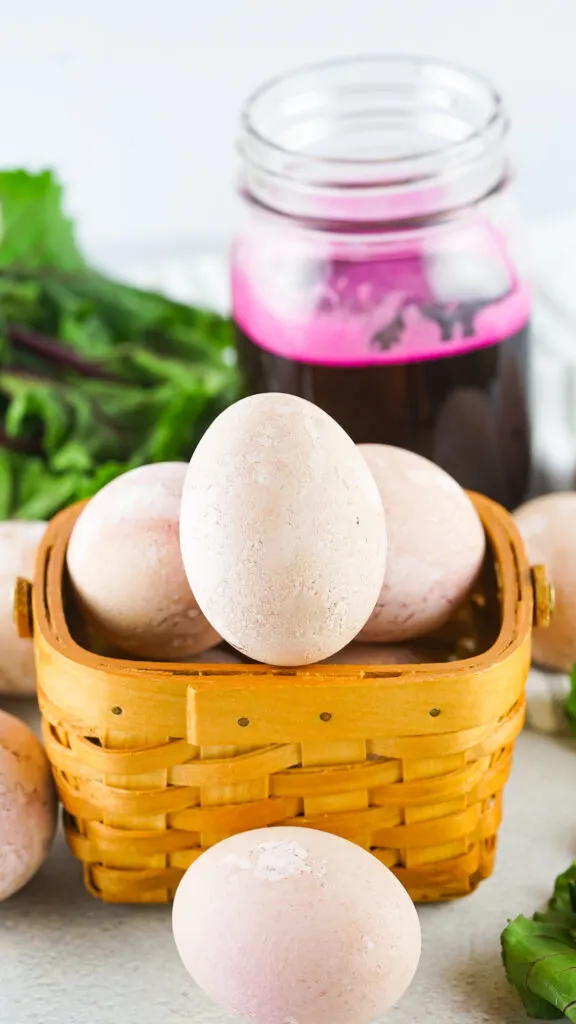
Even though the heavily pigmented color of the vegetables seems that it would dye the eggs red, it doesn’t. The color will be more of a salmon-color pink, no matter how long you let the eggs soak.
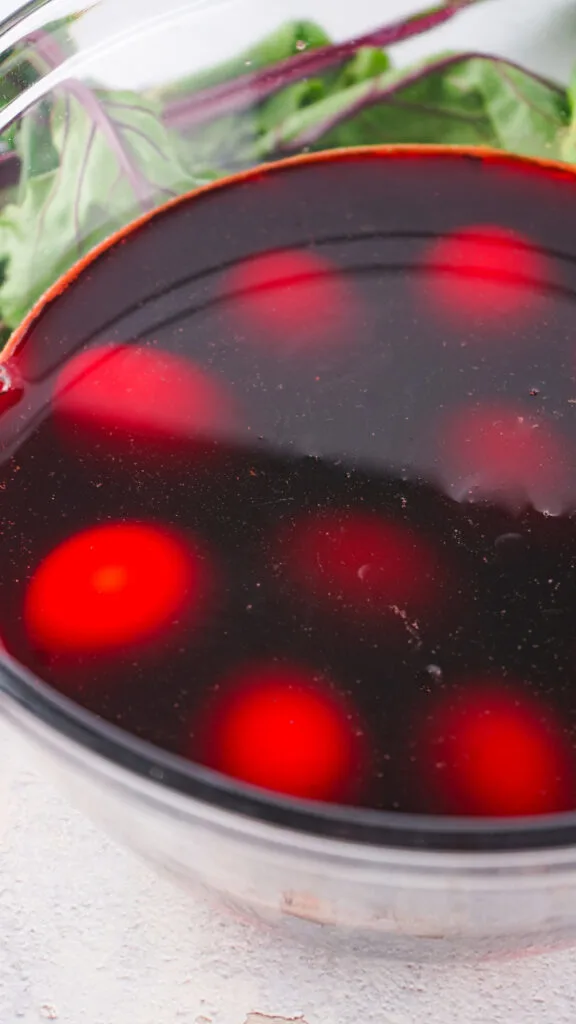
A printable how-to card is included below.
This is just one of many natural Easter egg dyes that I share on the website. Be sure to see them all!
Tuck these eggs into a basket filled with one of these 10 Easter Basket Grass alternatives for a sustainable treat. Add one of these 25 Natural Easter Gift Ideas or 109 Clutter-Free Easter gifts, too!
Helpful Tips
- Stainless steel and glass pots or bows are ideal for using beet juice dye. It won’t stain like it will plastic.
- This recipe calls for scrubbing the skins of the beets and trimming the leaves off before you slice and boil the vegetables. Do you have to do this? YES!!! Otherwise the dye color won’t be pink. Instead it will be a brownish green.
- Foam might develop on the bowl of dye as the eggs are soaking. This is completely normal and you don’t have to remove it.
- When you remove the eggs from the dye, you might find foam or bits of beet strings stuck to your eggs. You can rinse them off, but be careful not to use too much water. You might end up making the color less intense if you use a lot of water.
- You can leave your eggs in the natural dye as long as you’d like. The longer that you leave them in, the darker the color will become. It is a wise idea to start checking the color after about an hour in the dye. Gently lift the egg out of the dye and see if it’s dark enough. If not, then replace the egg and allow it to sit for longer in the liquid.
- Don’t use more or less vinegar than the instructions state. Too little vinegar will mean that the dye might not adhere well. Too much could mean that the egg shell will start dissolving.
- Beets can really stain your skin! If you don’t want your fingertips red from picking up the eggs out of the dye, use egg tongs to remove them.
- When drying the eggs, keep in mind that dripping dye will stain. Use a paper towel unless you don’t mind a reusable towel having red stains on it.
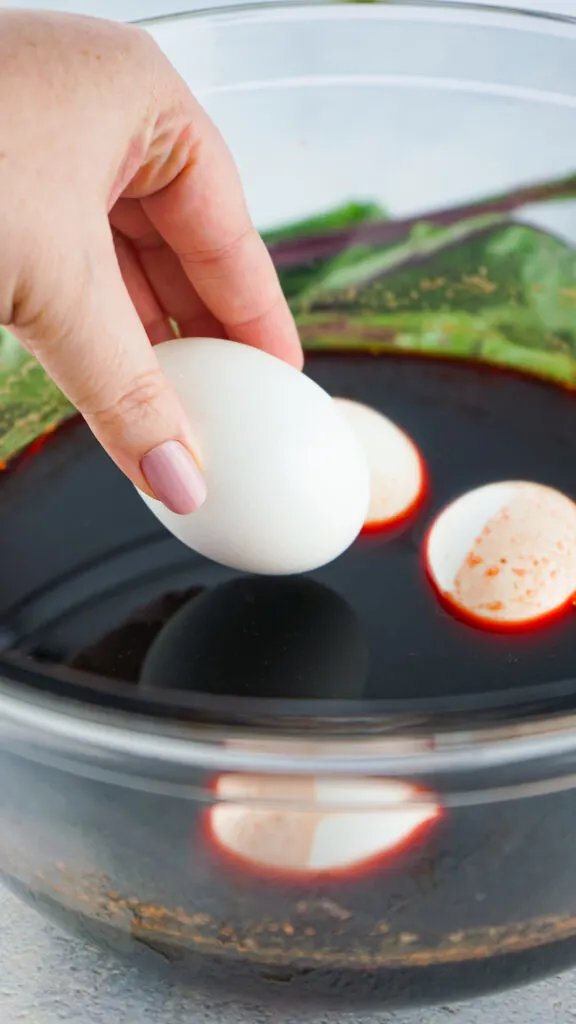
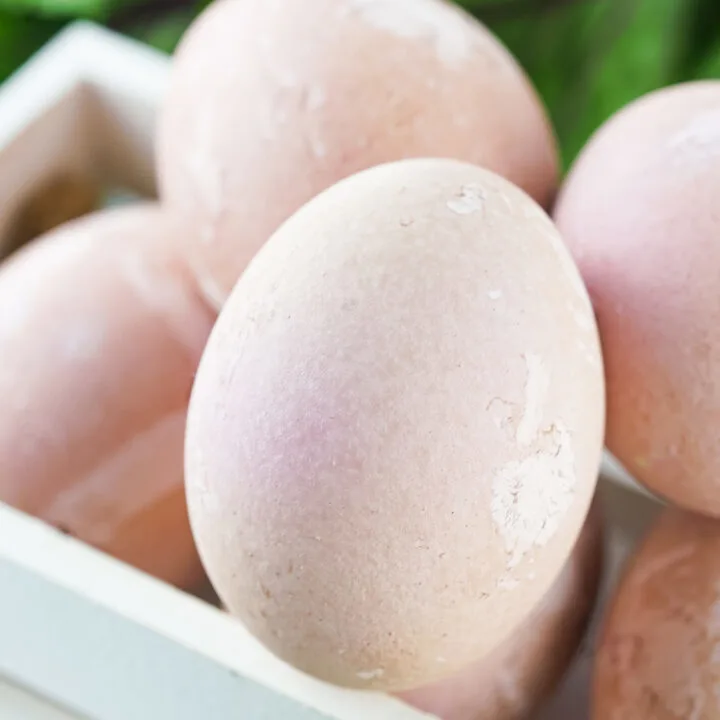
How to Dye Eggs with Beets
An easy way to dye eggs a natural pink color using beets. No chemicals used in this egg coloring, plus you can eat the beets afterwards!
Materials
- 2 Large Beets, scrubbed, trimmed and chopped
- 1 Cup White Distilled Vinegar
- 1 Quart Water
- Hard Boiled Eggs
Tools
- Pot
- Bowl
- Knife
Instructions
- Scrub the beets with a vegetable brush and trim off the ends before chopping them. If you do not, the color will turn out a brownish green which you don't want! Slice the beets into thick slices, then cut into cubes.
- Bring the water to a boil in a large pot. Add the beets and let them simmer for around 30 minutes.
- Strain the liquid and pour into a heat-safe, glass bowl. Add in the vinegar and stir. The beet chunks can now be used in a recipe or added to your compost bin.
- Place the hard boiled eggs in the bowl of beet dye. Make sure they are completely covered.
- Keep the eggs in the dye until you get the color that you want. You can check them occasionally to see how the color is developing by gently lifting them out of the dye. For this color shown, the eggs soaked for about 8 hours.
- Foam will develop on top of the bowl of dye. You don't need to remove it while dyeing the eggs. Once you are ready to remove the eggs, then you can remove the foam and take out the eggs.
- Once the color level has been achieved, remove the eggs from the dye using your fingers or tongs for eggs (I always use tongs like these when dyeing eggs) and place on a paper towel to dry. Flip the eggs over after a few minutes to prevent the dye from accumulating in one place where the egg is resting on the towel.
Notes
This how-to was found on GetGreenBeWell.com
FAQs
Can I Use Canned Beets to Make a Dye?
Yes, you can! Do not use pickled beets, though.
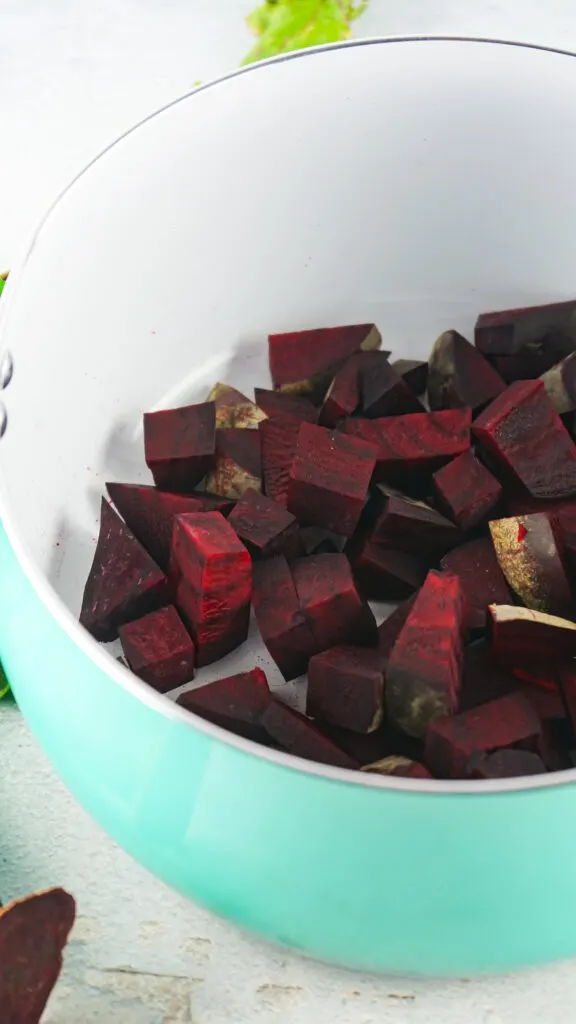
Can These Eggs Be Used the Next Day?
Yes, the colorful dye will last.
Will The Eggs Taste Like Beets?
No, your hard boiled eggs inside the shell will not taste like vegetables. However, if the egg shell has cracks, some of the natural dye color can get inside and color the eggs.
Can I Decorate the Eggs and Dye Them?
Yes, you can decorate eggs before or after dyeing them just like the process of any other Easter egg dye.
If you color on the egg before dyeing, I suggest using these non-toxic beeswax crayons. The wax will create a layer on the egg and won’t dye as strongly as the egg shell.
Why Isn’t the Color Perfectly Even Around the Egg?
Natural variations in the egg shell means that color is absorbed in different ways that might not be even or perfect.
While the beet juice should have the same amount of pigment in each cup of dye, that doesn’t mean the egg will absorb it evenly.
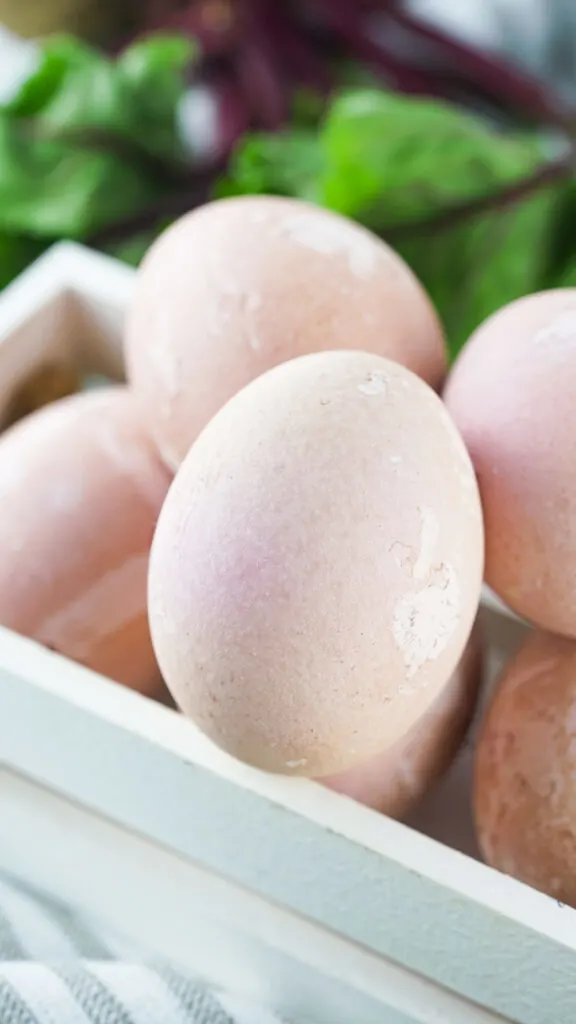
The beauty of nature is that nothing is perfect and everything changes! Embrace the natural look of these colorful eggs.
Do I Need to Put the Eggs in the Refrigerator After Coloring?
Treat these eggs the same as you would any hard boiled egg that you would dye. If the eggs are put in the refrigerator, they will be okay. You might find that the color runs just a bit, but that would be the same with any dyed Easter egg.
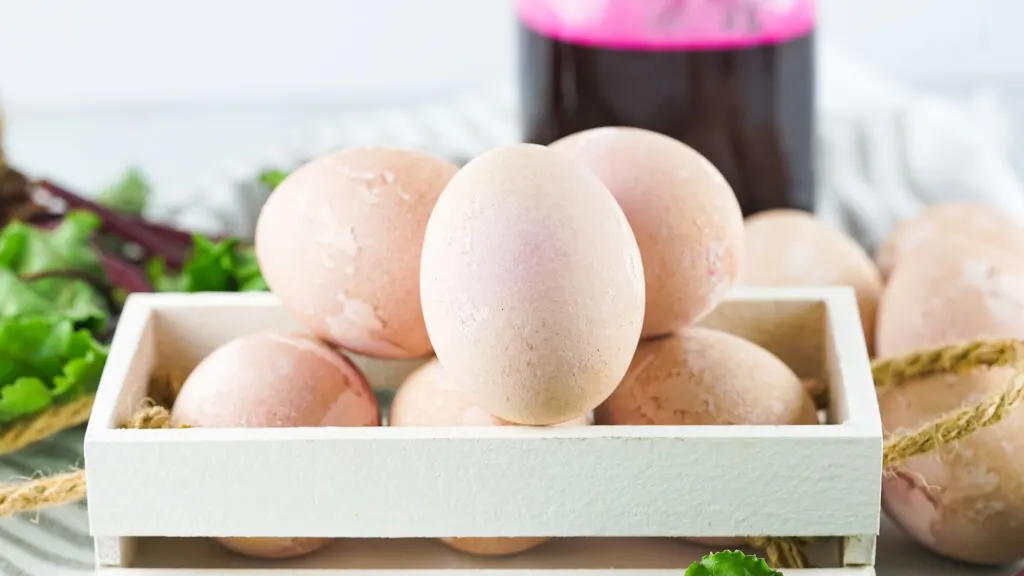
If you like how simple it is to dye eggs with beets, check out these easy DIYs, too:
- How to Dye Eggs with Blueberries
- How to Dye Eggs with Turmeric
- Easy Decoupaged Easter Eggs
- How to Dye Eggs with Black Tea